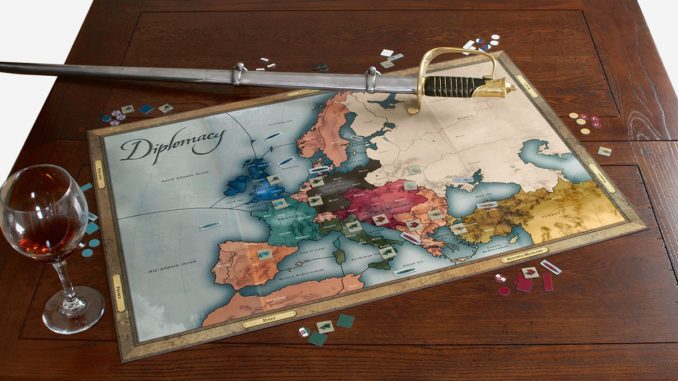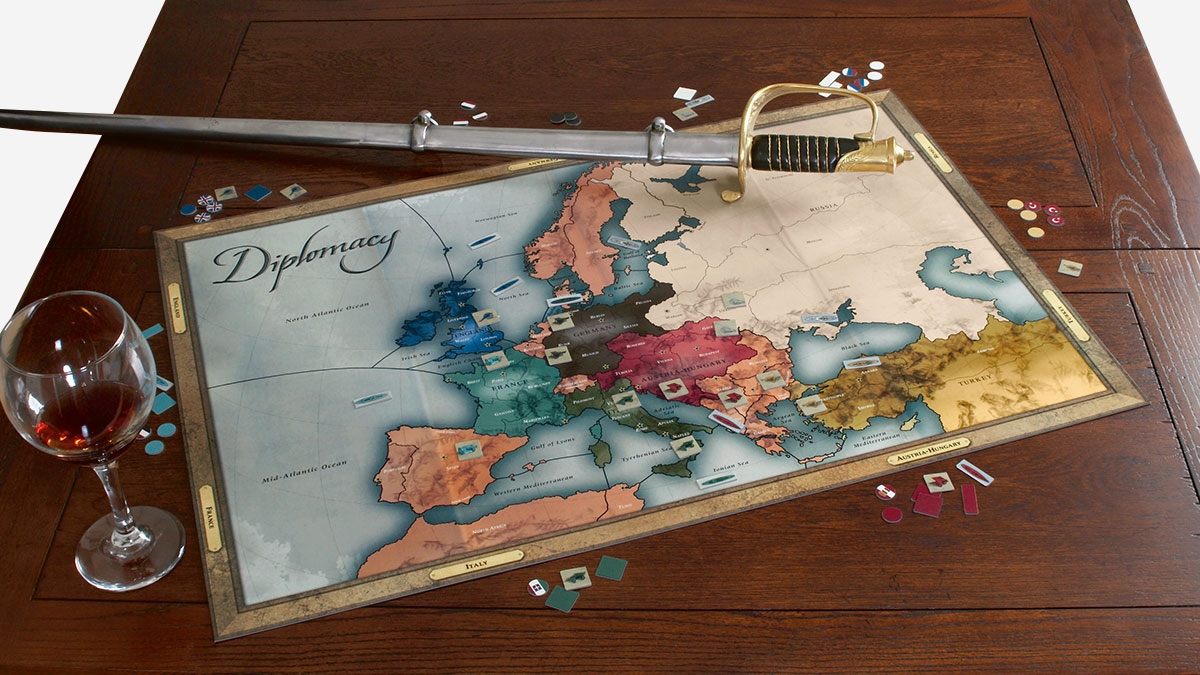
“The enemy of my enemy is my friend.” – Ancient Proverb
While I often focus on military strategy and operational art here at Command School, many board games put you in control of an entire state. Most strategy games are not hard core, detailed war games, and embrace a lot of abstraction. This means I should also cover diplomatic strategy, and really devote some good coverage to it as that’s a critical component of most ahistorical strategy games.
And don’t worry, seeing as how today’s topic is all about allying with others against a common foe, it is patently impossible for me to use Star Wars Rebellion as my example.
Balancing
Taken from international relations, balancing is a way for states to deal with threats to their security. Since the international stage is anarchic, that is to say there is no “world police” a la Command and Conquer‘s Global Defence Initiative, it is up to individual states to see to their own security. This is the principle of self-help. States balance against the threat of another state becoming too powerful and thus threatening. Balancing comes in two types: internal and external.
Internal balancing is all about what a state can do internally to increase its power. This generally looks like increasing economic output and and expanding military power. Internal balancing is considered the most reliable since, unlike allying with others, internal balancing does not depend on the strategy and interests of others.
On the other hand, external balancing deals with threats by finding external allies against the threat. While any one state may not be able to challenge the rising threat, an alliance of several states might. The simple call for, “Hey, everybody! Blue is winning, gang up on Blue!” exemplifies this concept. This produces a balance of power, if perhaps temporarily.
Explanatory Example: Diplomacy
Diplomacy, often described as the friend-ending board game, puts the players in control of one of the seven pre-World War I great powers of Europe. Players attempt to capture important provinces, supply centers, to expand their military and march towards the goal of controlling 18 such centers. There are no dice rolls and orders are executed simultaneously, so players must employ skillful diplomacy to marshal enough military power to make gains. But, the rules forbid an allied victory. Betrayal is thus inevitable.

In the above, fictional, board snapshot, we can see Russia (white) has already attacked Austro-Hungary (red). Turkey / the Ottomans (Yellow) have moved into the Balkans in either competition or cooperation with the Austrians. Germany (black) is focusing on the west.
Putting ourselves in the shoes of Austro-Hungary, Russia has shown itself to be a direct threat. Let’s consider some options for balancing:
- Internal Balancing: First, Austro-Hungary must prevent Russia from capturing Hungarian supply centers. This would weaken Austro-Hungary while making Russia more powerful. Once those centers are safeguarded, additional supply centers to build more armies would be needed. Ideally these be seized from the threat, Russia, or from a neutral in the Balkans, but snagging one from a distracted Germany is another option. Russia is our land neighbor, therefore we should be armies not navies.
- External Balancing: As Russia’s other neighbors, Germany and Turkey are our best and most likely options to externally balance Russia. Germany has turned their attention west, which leaves them quite open to Russian attack. We could try to limit our problems by seeking a non-aggression pact with Germany, especially if we don’t intend on seizing their supply centers. We could still steal one of their supply centers if needed, though this would jeopardize our credibility. Turkey is an obvious next target for Russia, especially once Russia controls Austro-Hungarian territory. We may not be able to persuade them to go on a full offensive, but they are likely to be convinced to support us in Hungary so that the balance of power is maintained.
Conclusion and Homework
Think about the last time you played a multiplayer (3+) strategy game. Did you have an, “everybody gang up against (Colour)!” moment? Did it work to stop that player, and what happened next? Let me know in those comments below.
Until next time, class dismissed.
Christopher Hunt
Latest posts by Christopher Hunt (see all)
- Command School – Deterrence and Compellence - July 11, 2019
